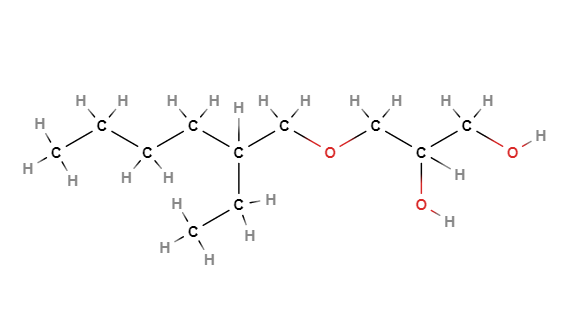No products in the cart.: $0.00
Ethylhexylglycerin

Ethylhexylglycerin is a synthetic compound used in skincare and cosmetics primarily as a preservative booster, stabilizer, and skin-conditioning agent. It’s a clear, colorless liquid often paired with other preservatives (like phenoxyethanol) to enhance their effectiveness while adding a touch of moisturizing softness. You’ll find it in creams, serums, lotions, and cleansers, typically at low concentrations.
What is it Made of?
Ethylhexylglycerin is a single molecule (C₁₁H₂₄O₃), chemically a glycerin derivative with an ethylhexyl group attached. It’s synthesized in labs by reacting glycerin (a natural humectant) with 2-ethylhexanol (a fatty alcohol) under controlled conditions. The result is a multifunctional ingredient that’s not naturally occurring but mimics some properties of glycerin. In products, it’s blended at 0.1%–1% with water, oils, or other preservatives.
Best Skin Type for Using It:
As a supporting ingredient, not a standalone active, ethylhexylglycerin’s suitability spans skin types:
-
- All Skin Types: Safe and neutral at typical levels (up to 1%). It’s in products for oily, dry, sensitive, or combination skin without targeting any specifically.
- Dry/Dehydrate Skin: Slightly beneficial—its humectant nature adds mild hydration.
- Sensitive Skin: Generally well-tolerated, though rare irritation can occur in high doses or with cumulative exposure.
- Oily/Acne-Prone: Fine—it’s non-comedogenic and won’t clog pores, but it doesn’t treat oiliness.
- Mature Skin: No direct anti-aging effect, but it supports product stability for actives that do.
- Avoid if allergic to synthetic glycerin derivatives (rare).
Benefits of Ethylhexylglycerin
Ethylhexylglycerin serves both formula and skin:
-
- Preservative Booster: Enhances the efficacy of primary preservatives (e.g., phenoxyethanol), reducing microbial growth.
- Skin Conditioning: Softens and smooths skin with a light moisturizing effect.
- Moisturizing: Acts as a humectant, drawing water into the skin.
- Antimicrobial: Mildly inhibits bacteria and fungi.
- Stability: Improves product texture and shelf life without altering scent or feel.
- Gentle: Lowers the need for harsher preservatives, indirectly benefiting sensitive skin.
- Conditioning: Improves texture of formulations (e.g., reduces tackiness).
- Deodorant Properties: Used in natural deodorants to combat odor-causing microbes.
Pros and Cons of Ethylhexylglycerin
Pros:
-
- Gentle: Safer alternative to parabens or formaldehyde-releasers.
- Multi-Functional: Preserves, conditions, and stabilizes in one.
- Low Irritation: Safe at standard levels (0.1%–1%) for most users.
- Paraben Alternative: Helps formulators avoid parabens while maintaining safety.
- Stable: Effective in a wide pH range (3–10).
- Eco-Friendly: Biodegradable and low toxicity.
Cons:
-
-
- Synthetic: Not “natural,” which some clean beauty fans dislike.
- Rare Sensitivity: Can irritate highly sensitive skin or eyes in higher concentrations.
- Not a Standalone Preservative: Requires pairing with other preservatives.
- Subtle Benefit: Skin-conditioning effect is mild—not a game-changer.
-
Used in low concentrations, ethylhexylglycerin enhances the antimicrobial power of other preservatives like phenoxyethanol while contributing a gentle, non-greasy skin-conditioning benefit. It suits all skin types, offering formulation stability and mild hydration, though its effects are subtle and occasional sensitivities may occur.
Disclaimer:



